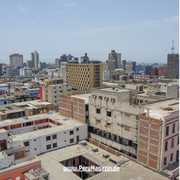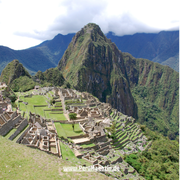
Peru , a fascinating country in South America with a rich cultural history and breathtaking landscape diversity, is home to a diverse population characterized by various ethno-cultural groups. In this article, we will take an in-depth look at Peru 's demographic structure, including key dates, facts, and trends.
1. Population size and growth rate:
Peru is one of the most populous countries in South America. According to estimates by the National Institute of Statistics and Informatics (INEI), Peru 's population was about 33 million people in 2022. This marks a continued increase over previous years, with a moderate growth rate of approximately 1.2% per year. This growth is the result of a combination of natural increase (births minus deaths) and net immigration.
2. Ethnic composition:
Peru is a melting pot of different ethno-cultural groups, resulting in a remarkable diversity in the population. The main ethnic groups include:
- Mestizos: The majority of Peru's population identifies as mestizos, a mix of indigenous peoples and European immigrants. They make up the majority of the population and are present in all parts of the country.
- Indigenous peoples: Peru is home to a large number of indigenous groups, some of which have retained their traditional way of life to this day. The best-known indigenous peoples include the Quechua, Aymara, Shipibo, and Asháninka.
- Afro-Peruvians: Afro-Peruvians are descendants of slaves brought to Peru during the colonial period. They are mainly found in the coastal regions of the country and have exerted a significant cultural influence.
- Whites: A small but influential minority in Peru are the descendants of European immigrants, particularly from Spain and Italy.
3. Population distribution by region:
Peru's population is unevenly distributed across the country, with most people living in urban centers. The largest metropolitan areas are Lima, the country's capital, as well as Arequipa, Trujillo and Chiclayo. These cities attract people from rural areas looking for job opportunities and a better standard of living. However, many communities in the country's remote regions remain sparsely populated.
4. Age structure:
Peru's population has a relatively young age structure, with a large proportion of the population being under 30 years old. This is partly due to a high birth rate, although this has tended to decrease in recent decades, reflecting increases in education and contraceptive use. However, increasing life expectancy also means that the proportion of older people in the population is increasing, which could have long-term effects on the country's social security systems.
5. Education and Literacy:
Education plays a crucial role in the development of a country and its people. In Peru, there is progress in education, but challenges still remain. The literacy rate is around 94%, with differences between urban and rural areas and between different ethnic groups. Access to education is often limited, particularly in remote regions of the country and among indigenous communities.
6. Health and life expectancy:
Healthcare in Peru has improved, but challenges remain regarding access to quality healthcare, particularly in rural areas. The average life expectancy is around 76 years, although there are differences between urban and rural regions and between different population groups.
7. Urbanization and rural migration:
Like many developing countries, Peru is undergoing significant urbanization, with people from rural areas flocking to cities in search of better living conditions and economic opportunities. This places increased strain on urban infrastructure and poses challenges for the government in providing housing, jobs and services to the growing urban population.
8. Factors influencing population development:
A variety of factors influence population trends in Peru, including economic conditions, education levels, health care, access to contraceptives and government policies. The government has implemented various programs to promote family planning and improve health care in order to control population trends and improve the quality of life of citizens.
Peru's population is characterized by diversity and dynamism, with different ethnic groups, age groups and geographical regions forming a rich cultural landscape. Despite challenges in education, health and infrastructure, Peru has made progress and continues to strive for sustainable development and improving living conditions for all its citizens. It is hoped that future government policies and international cooperation will help address the challenges and maximize the opportunities for a better life for the people of Peru.



